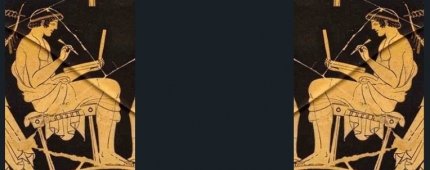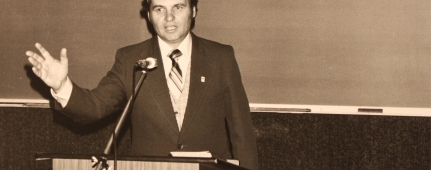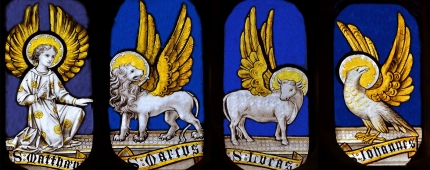THE DANGER FROM WITHIN THE CHURCH
David Farnell, PhD
TITLE:
“AS THE THEOLOGICAL SEMINARIES GO, SO GOES THE CHURCH”—J. Gresham Machen—The Christian Faith in the Modern World, p. 65
QUESTION FOR OUR READERS:
SHOULD SEMINARY EDUCATION EVEN BE CONTEMPLATED CONSIDERING TODAY’S EVANGELICAL CRITICAL SCHOLARS ARE TEACHING THE FUTURE GENERATION OF PASTORS?
Should a pulpit committee hire a pastoral candidate from certain seminaries who staff their faculty with evangelical, critical scholars who will train your church people in God’s Word and lead in the spiritual development of your congregation?
BREAKING NEWS:
Evangelical Critical Scholar Craig Evans, John Bisagno Distinguished Professor of Christian Origins, Houston Baptist University . . . The same school where Michael Licona teaches.
His school website: https://www.hbu.edu/contact/craig-evans/
Craig Evans says Jesus did not say the I AM STATEMENTS IN JOHN’S GOSPEL:
Listen here on youtube: https://youtu.be/ueRIdrlZsvs?t=1h34m
- I am the Bread of Life (John 6:35, 41, 48, 51)
- I am the Light of the World (John 8:12)
- I am the Door of the Sheep (John 10:7, 9)
- I am the Good Shepherd (10:11, 14)
- I am the Resurrection and the Life (John 11:25)
- I am the Way, the Truth and the Life (John 14:6)
- I am the True Vine (John 15:1, 5)
CRAIG EVANS ASSERTED THAT THE “I AM STATEMENTS” WERE NOT SPOKEN BY JESUS AS RECORDED IN JOHN
In a 2012 two-part debate on January 19-20 at St. Mary’s University, in San Antonio, Texas entitled “Does the New Testament Present a Reliable Portrait of the Historical Jesus,” (Part 1: https://youtu.be/ueRIdrlZsvs where Evans’ statement is made.
Bart Ehrman addresses the I AM statements of Jesus found in the Gospel of John.
Ehrman quotes some of them as found in John to Evans (e.g., Before Abraham was, I AM,” “I AM the way, the truth and the life, no one; I am the bread; I am the light of the world; the father and I are one”).
The following quotations are excerpted from this video starting at 1:34:00 (https://youtu.be/ueRIdrlZsvs?t=1h34m) where Ehrman and Evans interact with the I AM statements:
BART EHRMAN: “Jesus says a lot of I am statements” . . . My question to you is: Do you think that the historical Jesus really said these things [THE I AM SAYINGS]?”
CRAIG EVANS, “I think most of these things were not uttered as we find them by the historical Jesus.” (red added)
CRAIG EVANS: “My view is the Gospel of John is a horse of another color altogether. It’s a different genre.”
CRAIG EVANS: “John is often compared to wisdom literature; it’s like wisdom is personified; hoekema lady wisdom or Greek Sophia. She wanders the street; she calls out to people. She does things. Well nobody would read that thing and think did you see wisdom going down the street the other day; nobody would think that as a literal person. What is mysterious to me about John is that once you say that; say ok perhaps we should interpret the I AM statements as ‘he is confessions’ ‘he is the light of the world;’ he is the way the truth and the life; he is bread of life; a confession of the Johannine community that likely generated that version of the Gospel. About the time that you think that John is a gigantic parable along comes a scholar that who says you know John is loaded with historical details also; so that’s what makes John so tricky.”
CRAIG EVANS: “I don’t disagree with you too much on that point. I think John is studded with historical details; maybe you call them nuggets . . . That’s not a bad way of describing John. But I think that the Synoptics are more than some nuggets.”
BART EHRMAN: “Ok so let me ask just ask to pursue it then. I think both of us are agreeing that John is not historically accurate. It’s theologically been probably the most important of the gospels I would say historically. People relish the theological, but in terms of its historical accuracy if you were there you would not have heard Jesus say these things probably. It’s a later theological . . . .”
CRAIG EVANS: “No, not in so many words. Not like that. No, I don’t think so.”
BART EHRMAN: “So if we toss John out what would . . .”
Craig Evans: “Bart, we are not tossing John out. But . . . By the way, Bart, I object to like saying it’s not historically accurate. Well if something that isn’t exactly historical how is not historically accurate? It would be like saying you mean the parable the parable was a fiction that Jesus told . . . It’s not an actual . . . you mean it’s not historically accurate.”
BART EHRMAN: “Well we would have to argue what John was intending to produce.”
CRAIG EVANS: “Well that’s exactly what the question is”
BART EHRMAN: “We have no access to his intentions”
CRAIG EVANS: “Well that’s true for anything . . . . that’s why we do exegesis.”
BART EHRMAN: “If we agree that John is not historically accurate . . . which one of the Gospels is?”
BART EHRMAN: “Alright You have said that Jesus didn’t say, ok . . . You are not going to use John as a blueprint for writing the life the historical life of Jesus . . . because you think it is metaphorical.
EVANS: “fair enough.”
IN REPLY TO BART EHRMAN AND CRAIG EVANS . . .
Critical scholars usually use two essential arguments for saying that Jesus could not have made these statements such as the I AM statements in John.
ALSO, Evans uses HIS ASSUMED GENRE OVERRIDE to deny the Gospel of John’s Historicity in these I AM sayings of Jesus! The genre or style of John is not to be taken literally or historically. It only has “nuggets of history.”
The first one is detected in Evans when he talks about an alleged “Johannine ”
Many liberal and evangelical critical scholars hypothesize an alleged “Johannine Community” that produced the Gospel rather than John directly. This seems to be part of Craig Evans argument when Evans explicitly says that these were “he is” confessions of “the Johannine community” rather than statements made by Jesus.
Based on this view, the statements that John’s gospel present from Jesus did not directly come from Jesus, especially though not exclusively, the I AM statements.
Instead, the idea is that the “Johannine community” of John’s followers creatively formed these “sayings of Jesus” (though not from Jesus directly) to teach about Who Jesus was and what Jesus did—although Jesus Himself, in this view, did not say them directly.
In other words, this hypothesized “community” wanted others to know about Jesus’s nature and person through these I AM statements (and others) even though he did not utter them.
At best, they wanted readers to know of Jesus by placing sayings on Jesus’ lips (i.e., the theological Jesus of the Bible//the Christ of Faith) that Jesus did not actually say (i.e., the historical Jesus).
In essence, the I AM statements would represent NOT Jesus teaching but the beliefs of the Johannine Community about Jesus.
Where did the idea of a Johannine community come from today?
The Evidence of the Early Church that John the Apostle wrote the Gospel is UNASSAILABLE—VIRTUALLY UNANIMOUS.
The early church always asserted that John the Apostle wrote the Gospel of John. The evidence from the early church was virtually unanimous that a person, John the disciple, the “son of thunder” wrote John. Even liberal C. H. Dodd, who dismissed John as the writer of the Fourth Gospel, had to concede that the external evidence was “formidable” and that “Of any external evidence to the contrary that could be called cogent I am not aware” (Dodd, Historical Tradition in the Fourth Gospel, 12).
F. Bruce noted, “It is noteworthy that, while the four canonical Gospels could afford to be published anonymously, the apocryphal Gospels which began to appear from the mid-second century onwards claimed (falsely) to be written by apostles or other persons associated with the Lord.” (Bruce, The Gospel of John, p. 1).
Even thought the Gospel of John, like the Synoptics, is anonymous, the title of “According to John” was attached to it as soon as the Gospels began to circulate as a collection (Carson, The Gospel of John, 68).
Although John’s name does not appear in the Gospel, early church tradition strongly and consistently identifies the author as the Apostle John.
Some important references are: the early church father Irenaeus, Bishop of Lyons (ca. A. D. 140-ca. 210), who was himself a disciple of Polycarp (ca. A.D. 70-ca. 155-160) and Polycarp, in turn, a disciple of the Apostle John, testifies on Polycarp’s authority that John published the Gospel during his residence at Ephesus in Asia Minor when he was advanced in age (e.g. Against Heresies 2.22.5; 3.1.1.).
After Irenaeus, all the church fathers assumed John to be the Gospel’s author. Clement of Alexandria (ca. A.D. 150-ca. 215) writes that John, aware of the facts set forth in the other Gospels and being moved by the Holy Spirit, composed a “spiritual gospel” (see Eusebius’s Ecclesiastical History 6.14.7).
In his Against Heresies (3.1.2) Irenaeus expressly says, “John the disciple of the Lord, who leaned on Jesus’ breast, published the Gospel while he was resident at Ephesus in Asia.”
In Against Heresies 3.1.2, Irenaeus wrote . . .
For, while I was yet a boy, I saw thee in Lower Asia with Polycarp, distinguishing thyself in the royal court, and endeavoring to gain his approbation. For I have a more vivid recollection of what occurred at that time than of recent events (inasmuch as the experiences of childhood, keeping pace with the growth of the soul, become incorporated with it); so that I can even describe the place where the blessed Polycarp used to sit and discourse— his going out, too, and his coming in—his general mode of life and personal appearance, together with the discourses which he delivered to the people; also how he would speak of his familiar intercourse with John, and with the rest of those who had seen the Lord; and how he would call their words to remembrance. Whatsoever things he had heard from them respecting the Lord, both with regard to His miracles and His teaching, Polycarp having thus received [information] from the eye-witnesses of the Word of life, would recount them all in harmony with the Scriptures. These things, through God’s mercy which was upon me, I then listened to attentively, and treasured them up not on paper, but in my heart; and I am continually, by God’s grace, revolving these things accurately in my mind.
Irenaeus had direct personal contact (as a boy) with Polycarp (“in Polycarp’s house”), Bishop of Smyrna, who had direct contact with John the Apostle himself. Writing the following regarding interaction with John the Apostle, Irenaeus related that he had direct contact in his younger years with Polycarp who had sat listening to John the Apostle when the latter was young.
After Irenaeus, all the church fathers assumed John to be the Gospel’s author. Clement of Alexandria (ca. A.D. 150-ca. 215) writes that John, aware of the facts set forth in the other Gospels and being moved by the Holy Spirit, composed a “spiritual gospel” (see Eusebius’s Ecclesiastical History 6.14.7).
So there is NO EVIDENCE for any “Johannine Community” producing the Gospel—NONE.
So why do the LARGE MAJORITY OF NEW TESTAMENT CRITICAL SCHOLARS HOLD TO A JOHANNINE COMMUNITY AS PRODUCING THE GOSPEL rather than John the Apostle?
THEY IGNORE, EXPLAIN AWAY, OR DISMISS THE ANCIENT EXTERNAL EVIDENCE OF THE EARLY, NASCENT CHURCH THAT IS VIRTUALLY UNANIMOUS ON AUTHORSHIP OF ALL FOUR CANONICAL GOSPELS!
Today’s scholars stress NOVELTY in studying the New Testament Gospels—Acts 17:21—“Now all the Athenians and the foreigners who lived there would spend their time in nothing except telling or hearing something new.”
The goal of critical studies is to come up with a novel, unique idea in their work, i.e., make a new, major, unique contribution to Gospel study is the GOAL of a dissertation today.
To believe the early church witnesses who were closest to the time of the writing of the Gospels does NOT come up with anything unique.
They emphasize SUBJECTIVE, INTERNAL EVIDENCE PRODUCED FROM THE IMAGINATION OF THE INTERPRETER—in other words, through invented internal arguments of the text they can come up something new.
Internal evidence can be “interpreted” in a variety of ways. It begs the question many times or assumes what it is trying to prove.
Admittedly, internal evidence can be used for good at times, such as B. F. Westcott’s “Concentric Circles” argument that John wrote the Gospel that bears his name:
Internal Evidence though favors John as the writer too:
Westcott’s Concentric Proofs[1]
- The author was a Jew
- Normally he quotes from the LXX, but three times (i.e., 6:45; 13:18; 19:37) he quotes from the Masoretic Text because it disagrees with the LXX rendering. This indicates that he knew the Hebrew language.
- He is acquainted with Jewish feasts.
- Passover (2:13, 23; 6:4; 11:55; 12:1; 18:28)
- Tabernacles (5:1?; 7:2)
- Feast of Dedication (Hanukkah—10:22)
- He is acquainted with Jewish customs
- Arranging of the water pots (2:1-10)
- Burial customs of the Jews (11:38, 44, 19:40)
- He knew the feeling between the Jews and the Samaritans (4:9)
- Author was a Jew in Palestine
He knows the minutest geographical details
- He knows that Jacob’s well is deep (4:11)
- He knows that there is a descent from Cana to Capernaum on the Sea of Galilee—2:2.
- He distinguishes Bethany (1/2 mile east of Jerusalem) from Bethany beyond the Jordan (21 miles east of Jerusalem) (1:28; 11:18)
- Note: Luke, the historian, is frequently vague about Palestine, viz., 10:38: “He [Jesus] entered a certain “
- Author was an eyewitness of what he wrote
- Minutest details regarding the person, time, number, place that could only come from direct experience.
- 1:14, 39—10th hour (this may be the hour of John’s conversion)
- 13:16—Judas slipping out “and it was night.”
- Author was an apostle
- He had intimate knowledge of what was going on.
- He knew the thoughts and feelings of the apostles (2:11, 17, 22; 4:27; 6:19, 60; 12:16; 13:22, 28; 20:9; 21:12)
- Author was the Apostle John
- The author was exact in mentioning names of the characters of the book. If someone else had written the book, he would certainly not have omitted one of the most famous apostles. John is not mentioned in the Gospels, but he is mentioned in Matthew, Mark, and Luke. If it were written by someone else, it would be unthinkable that he would not have mentioned John by name.
- In 1:6 John the Baptist is mentioned, “and there was a man sent from God whose name was John.” He did not say, John the Baptist (as did the Synoptics—Matt 3:1; 11:11; Mark 1:4; Luke 7:20) to prevent confusion with the Apostle John. WHY? Because the Apostle John wrote the book and his readers knew this. Utter confusion would result unless the Apostle John is the author.
CONCLUSION: The Apostle John wrote this Gospel.
Please note that much of the data from John as witnessed in Westcott shows the writer as an eyewitness (see 3. And 4. Of Wescott’s Concentric Proof arguments above). John 21:15-23
He even knows the private conversation Jesus had with Peter after his resurrection (John 21:23).
PLEASE NOTE: IT IS VERY HARD TO ARGUE THAT SUCH EYEWITNESS DETAILS WOULD BE REMEMBERED BY A “COMMUNITY”—instead THESE SPECIFIC INDICATIONS ARE WHAT AN INDIVIDUAL WOULD REMEMBER FROM PERSONAL EXPERIENCE.
****Most of the time, however, today’s modern critical New Testament scholars often use internal evidence as a subjective means to produce novelty, i.e., they stack the evidence in their favor without fairly weighing other evidence.
So how did the “Johannine Community” develop?
Simply stated as follows:
- It began when historical criticism began to deny the authorship of John based on the testimony of the nascent church. Ernest Renan was one of the first to suggest a “school” produced it (Vie de Jésus-1863). Even Lightfoot, who upheld the Johannine authorship of John, started speculating about a Johannine school (Lightfoot, Supernatural Religion, 217).
- The “We” of John 21:24 plays a big part in the speculation based on internal evidence— “This is the disciple who is bearing witness about these things, and who has written these things, and WE know that his testimony is true.”
Who is the “we”?—well, according to many New Testament critical scholars, the “we” is a whole school or “community” who wrote John.
YET . . .
- The “we” might well be a group of unknown elders at Ephesus attesting John’s authority of what he wrote—NOT that they wrote it but that they confirm the truth of what John wrote
- “We” stands for John himself (an editorial “we”) since John likes “we” (1 John 1:1-4—“ 1John 1:1 That which was from the beginning, which we have heard, which we have seen with our eyes, which we looked upon and have touched with our hands, concerning the word of life— 2 the life was made manifest, and we have seen it, and testify to it and proclaim to you the eternal life, which was with the Father and was made manifest to us— 3 that which we have seen and heard we proclaim also to you, so that you too may have fellowship with us; and indeed our fellowship is with the Father and with his Son Jesus Christ. 4 And we are writing these things so that our joy may be complete.
Of course, this depends on the authorship of 1 John, but the early church evidence for John’s authorship here is essentially unassailable that he wrote 1 John (Papias, Irenaeus, Eusebius [Church History 3.39.17)]).
PLEASE NOTE: PAUL in his UNASSAILABLE Epistles (German Hauptbriefe or “Chief episltes), like 2 Corinthians, where NO ONE REALLY DOUBTS HE IS AUTHOR uses “we”—2 Cor. 10:11-13:
Let such a person understand that what we say by letter when absent, we do when present. 12 Not that we dare to classify or compare ourselves with some of those who are commending themselves. But when they measure themselves by one another and compare themselves with one another, they are without understanding. But we will not boast beyond limits, but will boast only with regard to the area of influence God assigned to us, to reach even to you.”
- Some suggested that the pattern of Philo and early Jewish writers who formed schools (Culpepper, Johannine School, p, 213). But no historical evidence exists for this school!
- Frankly, no explicit evidence exists in any early church writings that John had a school, other than statements/references to/of Polycarp/Papias that they heard him speak—which is hardly a proof for a “school.” (See church quotes above).
Thus, the idea of a school is quite speculative and without any substance whatsoever!
- The second one is detected in Evans when he talks about an alleged “genre” differences. Here the idea apparently is the idea that Jesus in the Synoptics does not sound the “same” as Jesus in the Gospel of John.
This is what is called the “genre” argument that is so prevalent among liberal, as well as evangelical, critical scholars.
Evans stated “My view is the Gospel of John is a horse of another color altogether. It’s a different genre.”
In reply, several things can be noted:
- No substantive reason suggests that Jesus could not have said the “I AM” statements. These evangelical critical scholars were not there to witness what Jesus said and how he said it!
- Very similar statements are paralleled also in the Synoptics, when Jesus said on the Sermon on the Mount to his disciples, when Jesus said things like “I AM” (ἐγώ εἰμι) in a divine special way or made similar statements regarding His disciples (see Raymond Brown, The Gospel of John, vol. 1, Appendix IV, pp. 532-38 who admits this!).
Some Synoptic passages have “I AM” used in a very similar way to John’s Gospel
- Mark 14:62; Luke 22:70—Where the claims provoke a charge of blasphemy best understood in a divine sense of identity
- 14:27: //Mark 6:50—where the disciples’ response to Jesus’s “I AM” demonstrates a profession of faith—“You are the Son of God.”
- Thus, this basic chart below
|
Synoptic Gospels |
Gospel of John |
|
“you are the salt of the world” [Υμεῖς ἐστε τὸ ἅλας τῆς γῆς]—Matt 5:13 |
|
|
“You are the light of the world–Υμεῖς ἐστε τὸ φῶς τοῦ κόσμου—Matt. 5:14 |
“I am the light of the world–ἐγώ εἰμι τὸ φῶς τοῦ κόσμου—John 8:12/9:5 |
|
“But immediately Jesus spoke to them, saying, “Take courage, it is I; do not be afraid.”— εὐθὺς δὲ ἐλάλησεν [ὁ Ἰησοῦς] αὐτοῖς λέγων· θαρσεῖτε, ἐγώ εἰμι· μὴ φοβεῖσθε–Matthew 14:27; Mark 6:50 |
John 6:20–But He *said to them, “It is I; 1ado not be afraid.”— ὁ δὲ λέγει αὐτοῖς· ἐγώ εἰμι· μὴ φοβεῖσθε. |
|
So they all said, “Are you the Son of God, then?” And he said to them, “You say that I am.”—Luke 22:70–ὁ δὲ πρὸς αὐτοὺς ἔφη· ὑμεῖς λέγετε ὅτι ἐγώ εἰμι. |
John 18:5–They answered Him, “Jesus the Nazarene.” He *said to them, “I am He.” And Judas also, who was betraying Him, was standing with them—“ἀπεκρίθησαν αὐτῷ· Ἰησοῦν τὸν Ναζωραῖον. λέγει αὐτοῖς· ἐγώ εἰμι. εἱστήκει δὲ καὶ Ἰούδας ὁ παραδιδοὺς αὐτὸν μετ᾿ αὐτῶν. |
|
Mark 13:6 // Luke 21:8– Many will come in My name, saying, ‘I am He!’ and will mislead many. πολλοὶ ἐλεύσονται ἐπὶ τῷ ὀνόματί μου λέγοντες ὅτι ἐγώ εἰμι, καὶ πολλοὺς πλανήσουσιν. |
- Since when does someone always speak in the same way? How one speaks often depends on the circumstances, audience, etc. To say that Jesus could not speak as John presents is an argument from silence and highly speculative. John was an eyewitness, these New Testament critical scholars ARE NOT!
- John’s Gospel stresses eyewitness theme/character so much it is hard to imagine that his gospel would demonstrate historicity by such marked departures from reporting it, e., what Jesus said and did.
One examines the CONSTANT THEME OF THE EYEWITNESS/TESTIFY VERSES for example,
- John 1:6-7—witness of John
- John 1:14—we beheld His glory
- John 1:20—“testimony of ”
- John 2:25—“”
- John 3:11—“testify of what we have ”
- John 5:31—“testify about ”
- John 5:36—“testimony which I have is greater than the testimony of ”
- John 5:39—“Scriptures testify about ”
- John 8:14 “testify about ”
See also John 10:25; 12:17; 15:26; 18:23; 18:37.
One is hard pressed with such language to see Jesus’s sayings and deeds to be second hand! Eyewitnesses to Jesus are strongly indicated.
- GRAMMATICO-HISTORICAL EXEGESIS OF JOHN GIVES NO HINT OF ANY CREATIVE COMMUNITY OR ANY ATTEMPT TO MEDIATE INDIRECTLY JESUS’S LIFE OR SAYINGS BY FABRICATING THINGS HE DID NOT SAY OR DO.
EVANS GENRE OVERRIDE ARGUMENT THAT THE GOSPEL OF JOHN IS A NON-HISTORICAL OR FIGURATIVE GENRE IN PLACES IS IMPOSED ON THE GOSPEL WITH NO EVIDENCE—IT IS JUST ASSUMED ON SPECULATION.
- A close examination and reading of John indicate that the writer presents these as directly coming from Jesus.
- Not one hint is given by anyone that what Jesus said was actually what Jesus said throughout the entire Gospel—NOT ONE.
- To say that the community said these sayings is to read into the Gospel something that the Gospel itself gives no indication fabricating.
- John’s purpose in 20:30-31 is in direct refutation of fabrication:
Therefore many other signs Jesus also performed IN THE PRESENCE OF THE DISCIPLES, which are not written in this book; 31 but these have been written so that you may believe that Jesus is 1the Christ, the Son of God; and that believing you may have life in His name.
NOTE: The “presence of the disciples” demonstrates that they heard and saw the events reported.
NOTE: The “not written in this book” indicates John admits the report is selective and can encompass what Matthew, Mark, and Luke report.
NOTE: No true conflict exists between John’s Gospel and the Synoptics except in the fertile speculation/imagination of the liberal or evangelical critical scholar.
BART EHRMAN IS CORRECT IN EVALUATING CRAIG EVANS’S POSITION—EVANS’S POSITION LEADS TO A DENIAL OF THE HISTORICAL ACCURACY OF JOHN’S GOSPEL!
EHRMAN’S HONESTY IN EVALUATION IS ACCURATE!
Question:
What is the IMPACT of teaching such things to Bible students and seminary candidates who will inhabit the pulpit’s in America’s churches?
Further thoughts . . .
- If Jesus did not say these sayings, what can God’s people be sure of what Jesus said?
- If Jesus did not say these sayings, what else can be doubted in Matthew, Mark, Luke, and John?
- SADLY, THIS WEB VIDEO and DEBATE IS BEING USED BY ISLAMICISTS TO AFFIRM THAT EVEN CHRISTIANS DON’T BELIEVE THEIR OWN GOSPELS!
(https://youtu.be/c0zkTTNGJLQ where this YouTube video post says “learn more about Islam at https://thefactsaboutislam.blogspot.co.uk/search/label/Trinity)
[1] B. F. Westcott, “St. John’s Gospel,” The Holy Bible with an Explanatory and Critical Commentary. Ed. F. C. Cook; vol. 2; London: John Murray, 1880), v-xxv. Reprint, The Gospel According to St. John (Grand Rapids: Eerdmans, 1962).
For easier reading and superior formatting, click here to open this article as a PDF file: Open as PDF














